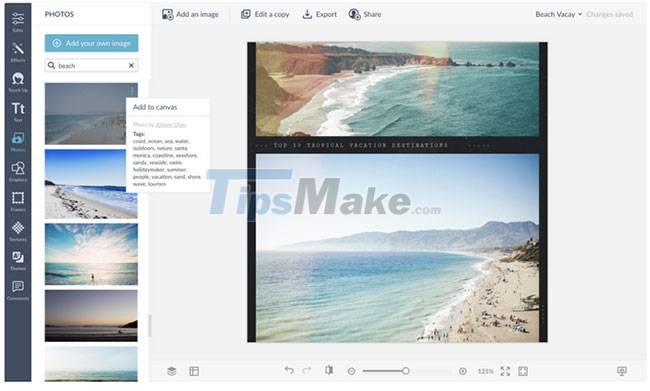What is WYSIWYG? What is markup language?
Part of the magic in software development happens when lines of code are transformed from the elements that make them up. You'll find yourself needing creative visualization when trying to build something this way. This is true for word processing, web design, as well as programming.
WYSIWYG stands for What You See Is What You Get. The WYSIWYG tool displays content for editing as an approximation of its final appearance. This is not the first choice for coding for developers, but a WYSIWYG editor is perfect for those who want to build a website or design a presentation.
What is markup language?

Descriptive code, also known as markup language, formats the elements of a document as it is processed by some kind of interpreter. Description tags apply meaning or format to a block of text using a library of predefined concepts, like bold text, bulleted lists, or even hyperlinks.
Document markup language is something you're probably already familiar with. It's the same kind of language that requires the computer to display web page text in bold when surrounded by tags.
However, when you are using an application like Word, the text becomes bold only when you press the button. Where are the hidden tags? Do they exist in these cases?
Objectively, there is something that requires computers to display bold text. However, there are no visible tags because their function - making the text bold - applies in the same way that a PDF file displays its formatting.
WYSIWYG editors are great for users who have ideas but don't know HTML or any other type of markup language. With these types of word processors and other rich text editors, you can focus on what you're trying to write without the need for extensive technical knowledge.
What is a WYSIWYG editor?

Xerox designed and used the first WYSIWYG systems. They use these interfaces to convert documents, preventing physical printing or copying. They are primitive and unreliable, but have set a valuable precedent.
If you use Google Docs to work with a document, you're already familiar with the WYSIWYG editor. You can start italicizing text and the app will format it as you type. If it's not a WYSIWYG editor, an italic font won't look like it. You'll see related words and phrases, in a simple format, and tags.

For ease of visualization, think of a website builder service like Wix or Squarespace. Using one of these website building services, you can design a website without writing a single line of code.
These platforms' WYSIWYG editing style goes a little deeper than Google Docs, but the general principle remains the same. You can drag and drop visual elements, populating the body of the page in front of things like media assets, audio players, and online stores. Everything is built from pieces like a Lego game. It's a very different feeling than coding a website from start to finish.
Some WYSIWYG markdown editors like Typora allow you to add code markup to WYSIWYG content as you type. These rich text editors render HTML commands and convert the output to a WYSIWYG display as soon as you type them. In Typora, you can go back to what you wrote by clicking on the text again after the tags around it have disappeared.
You should read it
- Create a simple Website with KompoZer
- What is Markdown and why should you learn it today?
- The easiest way to View XML files
- Use the Reveal Formatting feature in Word 2010
- How to convert XML files to Excel quickly
- Introduction to HTML
- How to structure XML for interactive Web applications?
- Wireless Application Protocol (WAP) price, marketcap, chart, and fundamentals info
May be interested
- Microsoft announces the most anticipated feature on Word web version
 it is not clear why microsoft has 'delayed' bringing simple markup to the word for web version for so long.
it is not clear why microsoft has 'delayed' bringing simple markup to the word for web version for so long. - In the end, big universities realized that Java was a lousy language if used for introductory programming
 the decision to remove java is really smart, because any student who has studied java has found that this is the harshest language that i have to learn when i start. frankly, it was too terrible.
the decision to remove java is really smart, because any student who has studied java has found that this is the harshest language that i have to learn when i start. frankly, it was too terrible. - Do you know what programming language is?
 programming language is a type of computer language used to develop software programs, scripts, or standardization under a system of specific rules for computer execution.
programming language is a type of computer language used to develop software programs, scripts, or standardization under a system of specific rules for computer execution. - Introduction to HTML
 a few basic things to know about html before starting to learn this language.
a few basic things to know about html before starting to learn this language. - Enable / disable the Language bar on Windows 10
 the language bar is used to quickly change the keyboard layout or input language without having to navigate to control panel or settings.
the language bar is used to quickly change the keyboard layout or input language without having to navigate to control panel or settings. - The reason why C programming language is never outdated
 ieee spectrum magazine ranked c as the leading language in 2017 before both java, c # and javascript. if you study c this year, it won't waste your time and effort. here are five reasons why.
ieee spectrum magazine ranked c as the leading language in 2017 before both java, c # and javascript. if you study c this year, it won't waste your time and effort. here are five reasons why. - Configure Windows XP SP2 network protection technologies on a computer (Part III)
 email programs often use the hypertext markup language (html) feature to enhance the beauty and content of emails. however, the use of html caused two vulnerabilities for email.
email programs often use the hypertext markup language (html) feature to enhance the beauty and content of emails. however, the use of html caused two vulnerabilities for email. - How to Open XML
 xml (extensible markup language) files don't do anything on their own. they are simply a way of storing data that can be easily read by other programs. many programs use xml to store data. as such, you can open, edit, and create an xml...
xml (extensible markup language) files don't do anything on their own. they are simply a way of storing data that can be easily read by other programs. many programs use xml to store data. as such, you can open, edit, and create an xml... - You may not know about these 23 hidden features on iOS 10 (The last part)
 markup is apple's own version of skitch, integrated with the operating system. previously, this version was only available in mail. however, now users can find markup on messages when previewing images or documents they send, or find directly on photos app.
markup is apple's own version of skitch, integrated with the operating system. previously, this version was only available in mail. however, now users can find markup on messages when previewing images or documents they send, or find directly on photos app. - How to Change the Windows 10 Language
 if you are a user who prefers one language over another, it may be a good time to change the language on windows 10. this wikihow will teach you how to do so. go to settings > time & language > region & language.
if you are a user who prefers one language over another, it may be a good time to change the language on windows 10. this wikihow will teach you how to do so. go to settings > time & language > region & language.










 Microsoft Visual C++ Redistributable 2015, download Microsoft Visual C++ Redistributable 2015 here
Microsoft Visual C++ Redistributable 2015, download Microsoft Visual C++ Redistributable 2015 here Visual Studio Community - Download Visual Studio Community here.
Visual Studio Community - Download Visual Studio Community here. Duolingo - Download Duolingo here
Duolingo - Download Duolingo here What is Google Cloud Shell? What's remarkable about Cloud Shell?
What is Google Cloud Shell? What's remarkable about Cloud Shell? POJO Generator: Support creating Pojos automatically in Intellij Idea
POJO Generator: Support creating Pojos automatically in Intellij Idea Steps to Import data from different tables in MySQL Workbench
Steps to Import data from different tables in MySQL Workbench